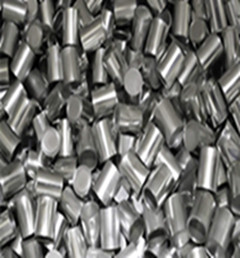
5 Benefits Hot Forged Car Parts Offers Over Machined Parts
5 Benefits Hot Forged Car Parts Offers Over Machined Parts
In the realm of automotive engineering, the choice between hot forged and machined parts can significantly impact performance, durability, and cost-effectiveness. While both techniques serve the purpose of shaping metal components, hot forging holds several advantages over traditional machining methods. Let’s delve into 5 key benefits hot forged car parts offer over machined parts.
Enhanced Strength and Structural Integrity:
Hot forging involves shaping metal under high pressure and temperature, resulting in superior strength and structural integrity compared to machined parts. The process aligns the grain structure of the metal, eliminating weak spots and enhancing resistance to stress, fatigue, and impact. This makes hot forged components ideal for critical automotive applications where reliability and safety are paramount.
Improved Material Utilization:
Unlike machining, which generates significant waste material, hot forging optimizes material usage by forming parts directly from a heated metal billet. This reduces material waste and minimizes the need for additional processing steps, leading to cost savings and environmental benefits. Additionally, the enhanced strength of hot forged parts allows for lightweight designs without compromising performance, contributing to fuel efficiency and emissions reduction in vehicles.
Consistency and Dimensional Accuracy:
Hot forging ensures consistent part dimensions and tight tolerances, resulting in precise and uniform components suitable for mass production. Machined parts, on the other hand, may exhibit variations due to tool wear, material inconsistencies, or machining errors, leading to quality control challenges and potential performance issues. By maintaining dimensional accuracy and repeatability, hot forged car parts enable manufacturers to meet stringent quality standards and deliver reliable products to customers.
Increased Fatigue Resistance:
Hot forged components exhibit superior fatigue resistance compared to machined parts, thanks to their refined microstructure and absence of stress concentrations. This allows them to withstand repeated loading cycles and prolonged service life under demanding operating conditions, such as high temperatures, vibration, and mechanical stress. Automotive applications that require durability and longevity, such as engine components and suspension systems, benefit greatly from the fatigue-resistant properties of hot forged parts.
Cost Efficiency and Production Speed:
While hot forging initially requires investment in specialized equipment and tooling, it offers long-term cost savings through higher production rates and reduced material waste. The efficient manufacturing process allows for rapid production of complex shapes with minimal secondary operations, streamlining the supply chain and lowering overall production costs. Additionally, the durability and performance advantages of hot forged car parts contribute to lower maintenance expenses and extended service intervals, further enhancing cost efficiency over the product lifecycle.
In conclusion, hot forged car parts offer a multitude of advantages over machined parts as listed above. For more about forged machine parts, including car parts, check out https://www.hotforgingchina.com/.
In the realm of automotive engineering, the choice between hot forged and machined parts can significantly impact performance, durability, and cost-effectiveness. While both techniques serve the purpose of shaping metal components, hot forging holds several advantages over traditional machining methods. Let’s delve into 5 key benefits hot forged car parts offer over machined parts.
Enhanced Strength and Structural Integrity:
Hot forging involves shaping metal under high pressure and temperature, resulting in superior strength and structural integrity compared to machined parts. The process aligns the grain structure of the metal, eliminating weak spots and enhancing resistance to stress, fatigue, and impact. This makes hot forged components ideal for critical automotive applications where reliability and safety are paramount.
Improved Material Utilization:
Unlike machining, which generates significant waste material, hot forging optimizes material usage by forming parts directly from a heated metal billet. This reduces material waste and minimizes the need for additional processing steps, leading to cost savings and environmental benefits. Additionally, the enhanced strength of hot forged parts allows for lightweight designs without compromising performance, contributing to fuel efficiency and emissions reduction in vehicles.
Consistency and Dimensional Accuracy:
Hot forging ensures consistent part dimensions and tight tolerances, resulting in precise and uniform components suitable for mass production. Machined parts, on the other hand, may exhibit variations due to tool wear, material inconsistencies, or machining errors, leading to quality control challenges and potential performance issues. By maintaining dimensional accuracy and repeatability, hot forged car parts enable manufacturers to meet stringent quality standards and deliver reliable products to customers.
Increased Fatigue Resistance:
Hot forged components exhibit superior fatigue resistance compared to machined parts, thanks to their refined microstructure and absence of stress concentrations. This allows them to withstand repeated loading cycles and prolonged service life under demanding operating conditions, such as high temperatures, vibration, and mechanical stress. Automotive applications that require durability and longevity, such as engine components and suspension systems, benefit greatly from the fatigue-resistant properties of hot forged parts.
Cost Efficiency and Production Speed:
While hot forging initially requires investment in specialized equipment and tooling, it offers long-term cost savings through higher production rates and reduced material waste. The efficient manufacturing process allows for rapid production of complex shapes with minimal secondary operations, streamlining the supply chain and lowering overall production costs. Additionally, the durability and performance advantages of hot forged car parts contribute to lower maintenance expenses and extended service intervals, further enhancing cost efficiency over the product lifecycle.
In conclusion, hot forged car parts offer a multitude of advantages over machined parts as listed above. For more about forged machine parts, including car parts, check out https://www.hotforgingchina.com/.